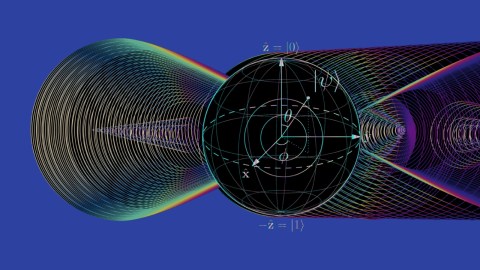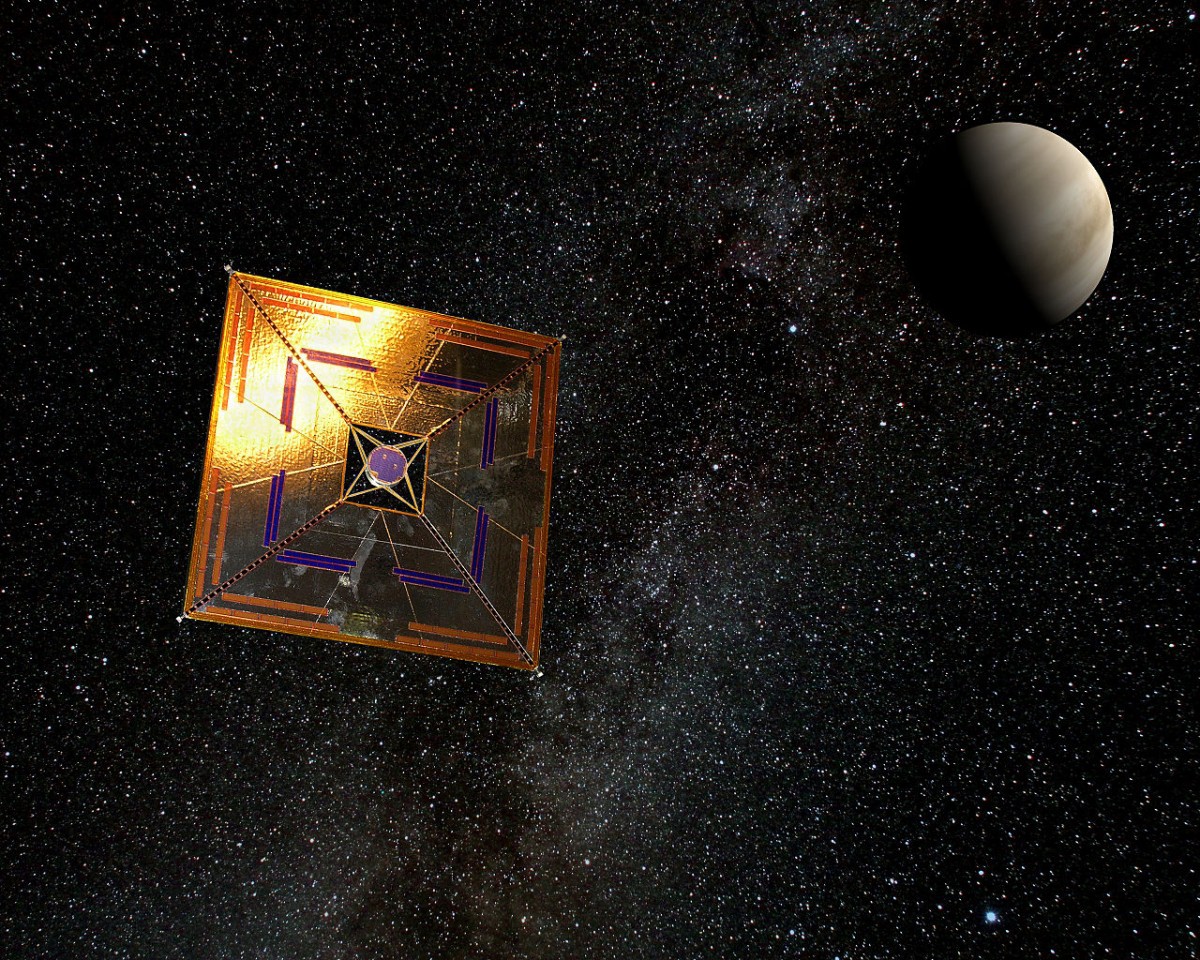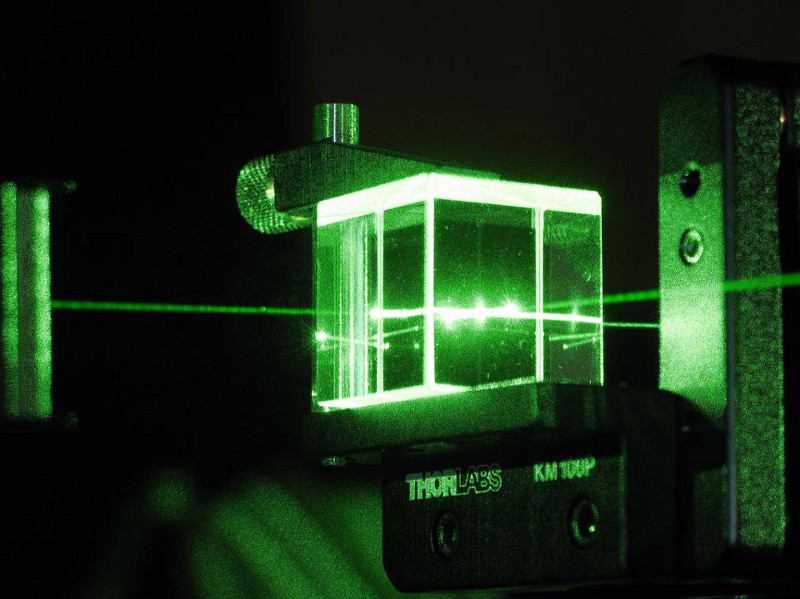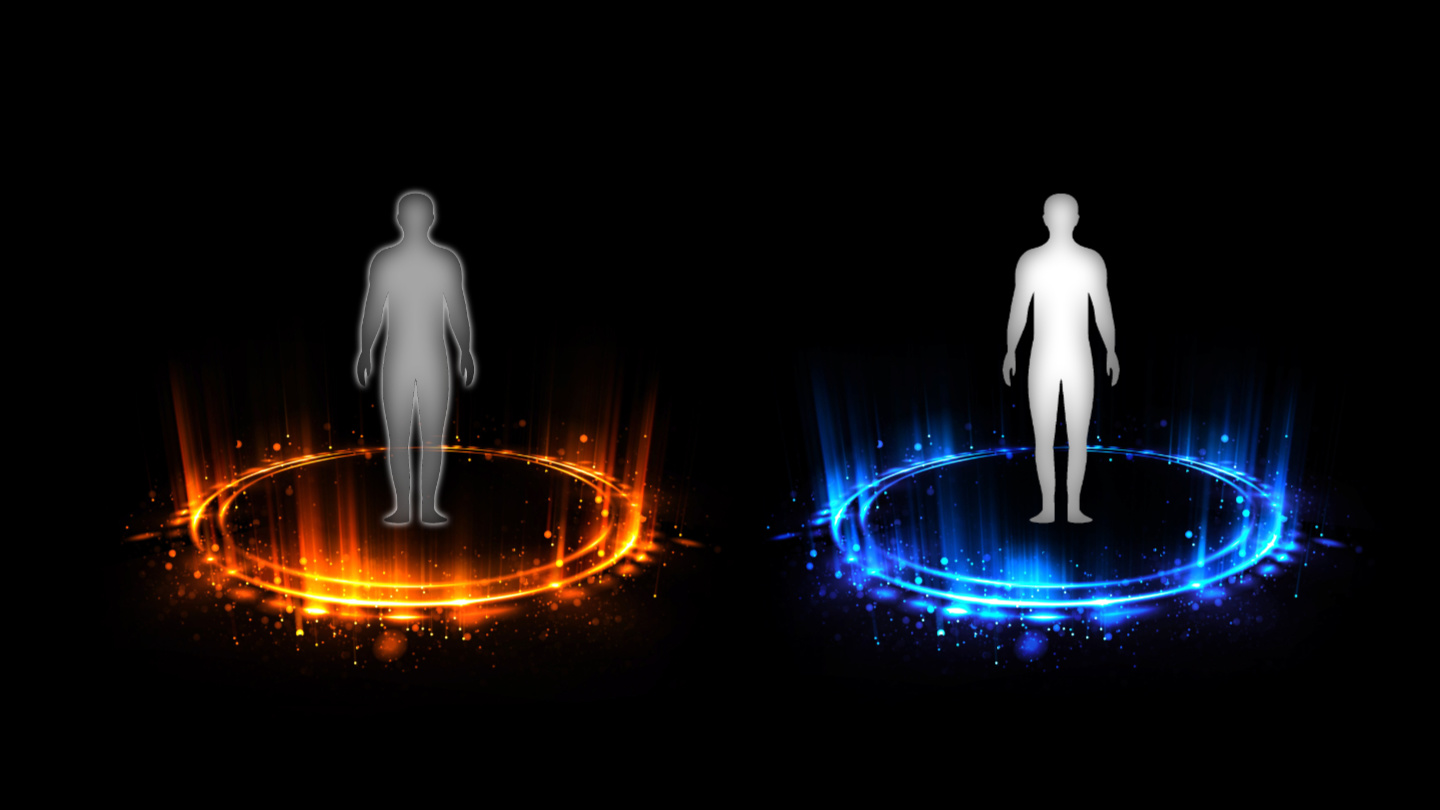What Einstein and Bohr’s debate over quantum entanglement taught us about reality

- The microscopic world behaves very unlike the world we see around us.
- The idea of quantum entanglement came at a time when the world’s greatest minds debated if the world’s tiniest particles are governed by chance.
- The 2022 Nobel Prize in physics was just awarded for the experimental test of Bell’s Inequality, showing that there is an uncertainty built into the Universe.
This is the first of a four-article series on how quantum entanglement is changing technology and how we understand the Universe around us.
Physics is not just a quest to predict how things work. It’s an attempt to understand the true nature of reality. For thousands of years, the world’s physicists and astronomers tried to understand how things behaved. At the beginning of the 1900s, scientists were trying to apply these rules to very small particles, such as electrons or photons.
To their surprise, the rules that governed the motion of a planet or a cannonball did not work on these small scales. At microscopic scales, reality operated in very different ways.
These particles are governed by uncertainty. For example, if you measure an electron’s position precisely, you lose information on its momentum. Electrons can go from one space to another without occupying any space in between. And most befuddling: Particles can have many properties at once until they are measured. Somehow, it’s the act of measurement that forces the particle to choose a value.
Today, we’ll explore one facet of quantum mechanics: what happens when two (or more) particles are entangled. By doing so, we’ll embark on a quest to understand the true nature of reality.
What are entangled particles?
Entangled particles share a bond. Wherever one is in the Universe, the other will have related properties when measured. Several properties can be entangled: spin, momentum, position, or any of a host of other observables. For example, if one entangled photon is measured to be spin up, its pair would be spin down. In essence, they share the same quantum state.
There are several ways to create entangled particles. For example, you can have a particle with zero spin decay into two daughter particles. Because spin must be conserved, one will have spin up while the other has spin down.
Quantum shapes
To understand the mystery of quantum entanglement, let’s do a thought experiment where shapes behave like subatomic particles and can be entangled.
In this example, our shapes can be perfectly round (a circle), be squashed into an oval, or become completely flattened into a straight line. They can also have color, somewhere on the spectrum between red and purple.
Let’s say our shapes become entangled. We send one of these entangled quantum objects to Alice and another to Bob. No one in the Universe, not Alice, not Bob, not us, knows at this point what the color or shape is.
When Alice receives her object, she runs a test to determine the color of her object and discovers that it is green. The wave function that defines the object’s color collapses, and it “decides” to be green. Since both of our shapes share a quantum state, when Bob measures his shape, it also must be green. This happens instantaneously, as if the objects can somehow communicate with a message that travels faster than the speed of light. This is true no matter where Alice and Bob are in the Universe.
This might not be too strange. After all, perhaps those objects decided to be green when they were last in contact but just didn’t tell anyone about it.
But what if Bob instead measures shape? When Alice and Bob randomly choose whether to measure shape or color, repeat their experiment over and over, and then share their results, we begin to see that something odd is going on. The fact that there is a random choice between two (or more) measurements is an important point, and we’ll come back to this later on.
Einstein vs. Bohr
Now let’s go back to the state of physics at the beginning of the 1900s, when the greatest minds in science were trying to form the framework of quantum physics. In 1905, with his explanation of the photoelectric effect, Einstein proposed that light, which was so far thought of as a wave, could also be described as a particle. In 1924, De Broglie extended this idea – if a wave of light could act as a particle – perhaps particles could act as waves. In 1926, Schrödinger then came up with a mathematical formula to write the wave function – how properties of a wave, like position, can actually be described as a range of positions. That same year, Born extended this to show that these wave functions illustrate the probability of position of a particle. This means that the particle has no definite position until it is observed. At this point, the wave function “collapses” as the particle picks one value to settle on.
The next year, in 1927, Heisenberg came up with his famous Uncertainty Principle. The Heisenberg Uncertainty Principle states that there are certain combinations of variables that are intertwined. For example, the position and momentum of a particle are connected. The more carefully you measure the particle’s position, the less you know its momentum, and vice versa. This is something built into quantum physics and doesn’t depend on the quality of your instrumentation.
When many of these great minds met in 1927 in Brussels, Bohr dropped a bombshell on the physics community. He presented a new idea, which combined many of these facets of physics. If the position of a particle can be described as a wave, and if this wave could be described as probability of position, combining this with Heisenberg’s Uncertainty Principle led to the conclusion that the properties of particles are not predetermined, but rather ruled by chance. This uncertainty is fundamental in the fabric of the Universe.
Einstein did not like this idea, and he made that known at the conference. Thus began a lifelong debate between Einstein and Bohr on the true nature of reality.
“God does not play dice with the universe.” – Einstein protested.
To which Bohr replied, “Stop telling God what to do.”
In 1933, Einstein, along with his colleagues Boris Podolsky and Nathan Rosen, published the Einstein-Podolsky-Rosen (EPR) paradox. Using our shape analogy above, the basic idea was that if you have two shapes that are “entangled” (although they did not use this term), by measuring one, you can know the properties of the other without ever observing it. These shapes can’t communicate faster than the speed of light (that would violate relativity, they argued). Instead, they must have some sort of “hidden variable” – a characteristic that they decided on when they became entangled. This was hidden from the rest of the world until one of them was observed.
Who’s right, and how strange is our Universe, really?
With their EPR paradox, Einstein, Podolsky, and Rosen inadvertently introduced the idea of quantum entanglement into the world. This idea was later named and expounded upon by Schrödinger.
So, what does entanglement tell us? Do our objects have predetermined characteristics that they “agreed upon” beforehand, like shape and color (Einstein’s hidden variables)? Or are their properties determined at the instant of measurement, and somehow are shared between entangled objects, even if they are on opposite sides of the Universe (Bohr’s proposition)?
It wasn’t until decades later in 1964 when physicist John Steward Bell came up with a way to test who is right – Einstein or Bohr. This was put to the test by several experiments, the first of which just won the 2022 Nobel Prize in Physics.
It goes something like this. Subatomic particles can have a property we call spin. The particle isn’t really rotating in the way a macroscopic object does, but we can envision it rotating either with spin up or down. If two particles are entangled, in order to conserve angular momentum, they must have spins that are anti-aligned with one another. These entangled particles are sent to our two observers, Alice and Bob.
Alice and Bob now both measure the spin of their particle using a filter that is aligned with the axis of the particle’s spin. Whenever Alice finds spin up, Bob must find spin down, and vice versa. But Bob and Alice can choose to measure the spin at a different angle, and it’s here where things get interesting.
Let’s give Alice and Bob three choices – they can either measure their spin at 0 degrees, 120 degrees, or 240 degrees.
According to Einstein’s hidden variables, the particles have already made up their mind about whether or not they will be measured as spin up or down for each of these filters. Let’s pretend that Alice’s particle decides to be spin up for 0°, spin down for 120°, and spin down for 240° (and the opposite for Bob). We can write this as UDD for Alice, and DUU for Bob. For different combinations of measurements, Alice and Bob will find:
- Alice measures 0°, Bob measures 0°: different spins
- Alice measures 0°, Bob measures 120°: same spin
- Alice measures 0°, Bob measures 240°: same spin
- Alice measures 120°, Bob measures 0°: same spin
- Alice measures 120°, Bob measures 120°: different spins
- Alice measures 120°, Bob measures 240°: different spins
- Alice measures 240°, Bob measures 0°: same spin
- Alice measures 240°, Bob measures 120°: different spins
- Alice measures 240°, Bob measures 240°: different spins
So 5/9 of the time, Alice and Bob make different measurements. (The other combinations of choice of spins give us mathematically the same results, except for UUU or DDD, in which case, 100% of the time the spins will be different.) So for more than half of the time, if Einstein is right, a spin measured by Alice and Bob in a random direction should be different.
But Bohr would see things differently. In this case, the direction of spin is not predetermined at each angle. Instead, the spin is determined the instant it is measured. Let’s start with the case where both Alice and Bob randomly choose to measure the spin at 0°. If Alice finds her particle to be spin up, then Bob must find his to be spin down. Same as in Einstein’s case.
But Alice and Bob can choose to measure the spin of their particle at different angles. What is the probability that Alice and Bob will measure different spins?
For example, let’s say that the particle would be measured as “spin up” at 0°. But instead, we take our measurement at an angle of 120° from the axis of spin. Since the particle is not spinning on the same axis as the filter, it has a ¼ chance of being recorded as spin down, and a ¾ chance of being recorded as spin up. Similarly, it can also be measured at an angle of 240°.
Since the direction of measurement is chosen randomly, Bob has a 2/3 chance of measuring the spin at a different angle than Alice. Let’s say he chooses 120°. He has a ¾ chance of measuring the particle to be spin down (remember, if he chose 0°, he would have a 100% chance of measuring spin down.) 2/3 times ¾ is one half. So half the time, Alice and Bob should find particles with opposite spins.
If Einstein is right, we see different measurements more than half the time. If Bohr is right, we see that these measurements are different half the time. The two predictions do not agree!
This is Bell’s Inequality, which can be tested. And it has been tested using particles in the lab to analyzing light from distant quasars.
So, who’s right?
Time and time again, we see that measurements of entangled particles are the same half the time. So Bohr was right! There are no hidden variables. Particles have no inherent properties. Instead, they decide the moment they are measured. And their pair, potentially on the other side of the Universe, somehow knows.
There is an uncertainty in our Universe, inherent in the nature of reality.
What this all means is something we’re still trying to figure out. But knowledge of entanglement can be incredibly useful. In the next articles, we’ll explore how quantum entanglement will soon be revolutionizing the world’s technology.





